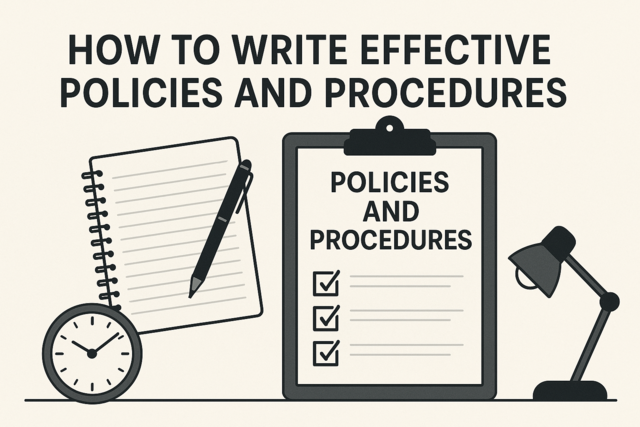Using realia makes a lesson more interesting and exciting for the students, but the real benefit is that the use of physical objects can really help students to learn and remember vocabulary.
A class on the vocabulary of fruits and vegetables is totally enhanced by real-life examples of each word you are teaching that day. Handing out a potato and getting the students to say "potato" while they pass it around really reinforces the word in their brain. Always take every chance to use real objects in the class whenever practical.
Once in the Presentation stage on the first day of a one-on-one class, I took the realia of the day and played catch with the student, who was a young beginner.
I lightly tossed each object to her, saying its name, and had her repeat it when she tossed it back. She was right in front of me and, of course, I tossed each object very gently.
I tossed her a small book and said "a book," and she tossed it back as she said "a book." For other objects that weren't so appropriate for tossing, I handed them to her. "A glass," I said as I gave it to her, and she repeated it when she handed it back.
Besides helping the student learn the vocabulary, it was fun and an ice-breaker for the youngster. If your solo student is not so young or otherwise might be adverse to playing catch, handing the object back and forth works just as well.
Using Realia in the Deserted Island Exercise
Deserted Island is a classic English teaching class that is fun and really encourages student participation.
It can be adjusted to practice different grammar forms, and realia can really help grab student interest while they learn new words. Because it departs from some of the strict structure of PPP methodology, it can be used to change up the routine of your classroom lessons.
First, you draw a picture on the board of a sinking ship with stick-figure people on it. As you draw it, say what it is. For example, "You are on a ship. The ship is sinking." You can also draw an arrow showing the ship is going down.
Then, next to it, draw an island. On the island draw a river (a source of water), coconut trees on the beach (a possible food source) and a forest (a possible food source but also a possible source of danger). Again, say the words as you draw them.
Now ask the students what they need on the island. This can also be done in a level-appropriate way.
For students that already have been taught conditionals, you could say "If this is you, what would you need?" For lower-level students, you could way, "This is you. What do you need?"
Students will start to name things they want on the island. If they don't immediately start, help them with your realia.
Some things you can bring for this class: a box of matches, a lighter, a Swiss Army knife, a small radio, a mobile phone, a can of food, an airplane bottle of liquor, various tools, etc. Elicit the word as you show the each object.
Soon the students will be naming their own. Students will often say a gun or rifle (for hunting in the forest or for protection). Some will say a "satellite phone." Usually someone will say "coffee" and "cigarettes." Sometimes a student will say "a friend" but it's best to limit the list to objects.
Write all the words on the board, and draw a picture for the words that you don't have realia for. This list can be as long as you like, which might break the rule of thumb concerning the ideal number of vocabulary words per classroom lesson, but it's okay in this case especially since the students will be offering up most of the vocabulary. However, limit the length of time for this part of the class. It should be no more than one-third of the class.
So you now have a list like this:
a box of matches
a knife
a Swiss Army knife
a gun
a rifle
bullets
canned food
(etc.)
After this part of the class, I sometimes amend the words to make the exercise go smoother during the next part. For example, I change "canned food" to "a box of canned food." You will see why in a moment.
Now, next to the list of words write "Why?" and elicit reasons to have each object. For example:
What? Why?
a box of matches to make a fire
a knife to cut food
a gun to hunt / to protect yourself
a rifle "
a box of canned food to eat
(etc.)
This part can be adjusted according to the class level and your target language. For example, under "Why?" the list could say "for protection" instead of "to protect."
At this point, you can do the standard vocabulary drill we have learned in previous lessons. Have the students write the words on the board in their notebooks while you go around and check for misspellings, then have them close their books and verbally test them on the words, etc.
Now announce that because the ship in sinking, the students can only bring five of the objects from the list with them. Tell the students to make a list in their notebooks of the five objects they choose.
If you want the students to practice modals, you can have them write five sentences such as:
For a class on comparisons, you could make them write sentences like this:
A box of matches is more useful than a gun.
For a more basic class, sentences like this:
I need a box of matches to make a fire.
Next, put the class into groups. For a larger class, you can make two or three groups. For a small class, two or three groups of two or three.
Tell the class that each group must discuss and agree on a new list of the five objects they want on the island.
Make sure their discussion is in English ("English, please") but otherwise let the students talk freely in their groups.
This can be the end of the class, with discussion within groups being a de factor Production phase of the class.
Or you can leave time for a final part of the class, where you compare the group results. In this case, give the students enough time to finish their group discussions by saying "you have five minutes" (or ten for a longer class).
Then have someone from each group read their list out loud while you write each list on the board.
Point out the differences and similarities. You can adjust this part according to the level of your class. If your class has already studied comparison, you can lead the open discussion by asking about the differences in the list by saying "Why is a gun more important than a phone?" or "Why is having a lighter better than having a radio?"
At the end, you can have the class vote in order to choose between the differences, and then cross out the losing objects, until there are only five objects left on the list.
Realia also helps in understanding concepts, as you will see below in the lesson plan on prepositions of place.
A Lesson Plan on Prepositions of Place
Classroom Objectives:
-For students to learn and be able to use the prepositions of place
in, on, under, next to, behind, in front of and between
-Vocabulary: dog, cat, box, house, ball and bird.
Presentation
First teach the vocabulary with the techniques we have covered in previous lessons.
Then take out two empty boxes and some object. In this case, we will use a ball, but it could be a mobile phone, a book, or anything you choose.
A new technique for eliciting
Then place the ball in one of the boxes. Say "the ball is mmm the box." The "mmm" is a noise you make to indicate that there is a missing word in the sentence. This is another elicitation technique which often comes in handy in the classroom.
You can also write on the board "the ball is _________ the box" and point to each word as you read it aloud, but say "mmm" for the blank. This will help your student to understand what you mean by the "mmm."
So you say "the ball is mmm the box" and look to the class for a response. If they get it and someone knows the answer, someone will offer "in" (or maybe an incorrect answer, in which case we use the techniques discussed in previous lessons, such as avoiding the word "no" etc.)
Instead of this eliciting that way, you can simply write on the board "Where is the ball?" and then ask the question to the class.
If they don't get it or you get no correct answers, say "the ball is IN the box." Go to the board and draw a simple sketch of a square with a circle in the box, and write "in" next to the drawing. Have the students repeat "in" and "in the box."
Repeat for the words on, under, next to, behind, in front of and between (using two boxes with the ball in the middle for between.)
Using the techniques we have covered, have the students write the words in their notebooks, then test them on the vocabulary. You do this by erasing the words next to the drawings and asking them to identify the right word that goes with each drawing.
Then you can use your realia and act out each scenario, quickly and wordlessly, for example by putting the ball in the box and eliciting a response. Some will call out "in the box" while others just "in." Both are fine.
Practice
This first exercise is a transition from Presentation to Practice.
Practice 1
You can use an open pairs to demonstrate this task. (Later you will have the class perform in closed pairs for the Presentation.)
In this case, choose one student with an open hand, and then indicate "Where is the ball?" to the first student, getting the student to repeat.
Then choose another student to reply based on the arrangement of the objects, for example "it is in the box." Get the first student to repeat the question and the second student to repeat the answer, several times.
Then change the location of the box and ball, have the first student repeat the question, and the second student to reply with the new answer, "it's on the box" (for example.)
Then change the arrangement of the box and ball, choose two new students, indicate the question, have the first student ask, and the second answer based on the new arrangement.
As soon as it's clear the students understand the task, quickly move through the class, choosing pairs of students, until each student has asked questions and given answers.
Practice 2
The second Practice exercise can be a fill-in-the-blank exercise. A fun one is to hand out a quizzes with drawings of a dog, a cat, a bird and a house in the various positions (in the house, on the house etc.) The first part can be a simple fill-in-the-blank quiz for choosing the correct preposition. For example,
Fill in the blank with on, under, next to, behind, in front of or between
1. The dog is ____________ the house.
2. The cat is ____________ the houses.
(Etc.)
As you are handing out the quiz, announce "four minutes!" (or whatever is appropriate for the length of the quiz.) During this time you walk around the class and encourage students while also encouraging self-correction of mistakes, as we have learned in previous lessons.
You could even do this without a handout by numbering images on the board and writing the example sentence also on the board. Have the students write the answers in their notebooks. For example, 1. IN 2. BETWEEN (etc.)
Finish this practice quickly by asking the whole class for the correct answers. You can simply say, "Number one?" and let the students say the answer out loud. If anyone says the wrong answer, encourage a self-correction.
Practice 3
The third exercise can be a full, if short, writing exercise. Using images similar to the one in the previous exercise (or the same ones already on the board), have the students write full sentence to describe each image. Again, announce a time limit and afterwards get students to read their answers, on line at a time, quickly going through the whole class.
Production
Now you can put the class into closed pairs.
Have the students use their book (or notebook) and their pens as their own realia. Model the activity by putting a pen on a notebook and asking "where is the pen?" After they answer, put the book between two pens, and ask "where is the book?"
After they answer, have the students do the activity in their pairs. As always in the Production, go through the class and encourage the activity, in this case making sure they are taking turns asking and answering as well as using all the prepositions.
In addition or instead of this exercise, you can do any of the following:
Further activities for the Production
-Drawing pictures: In their pairs, each student draws a picture suggesting a preposition of place, and asks the other student "where is the...?" while taking turns. To present this activity, you could do it a couple times on the board. Encourage fun by drawing odd pictures. Where is the bird? The bird is in the car. Where is the man? The man is on the big bird, etc.
An alternative to this exercise is to have the students draw themselves in various places. Then the person who draws says "Where am I?" and the other student looks at the drawing and answers.
Another idea is to have students draw their rooms. Then the students can ask and answer questions such as "What is on the table? Where is the lamp?"
-Describing pictures: This is similar to the above exercise, but instead you hand out pictures that show common objects in a common setting. They could be photos of an open refrigerator, fruits and vegetables in a supermarket, objects on shelves. Again the exercise is the have one student ask "where is the..?" while the other answers, taking turns.






















